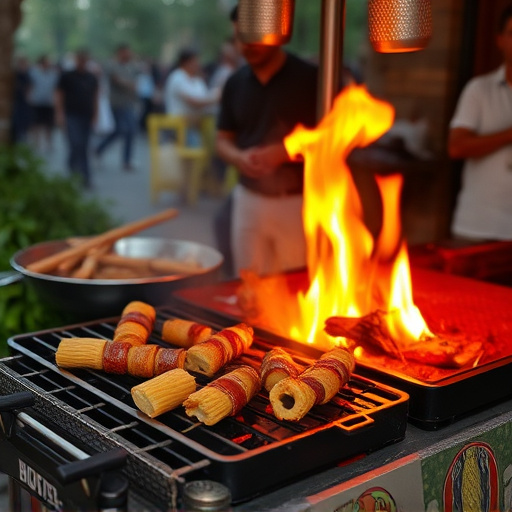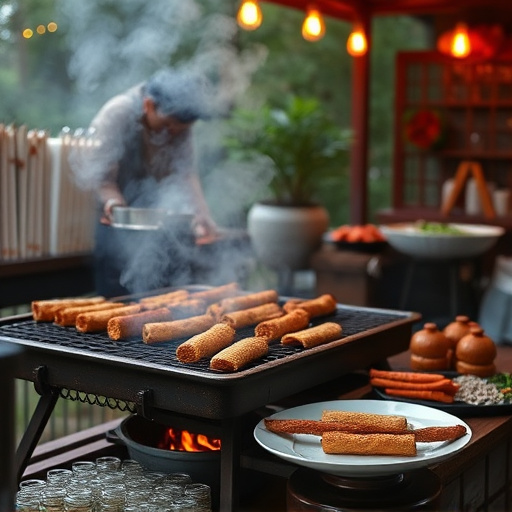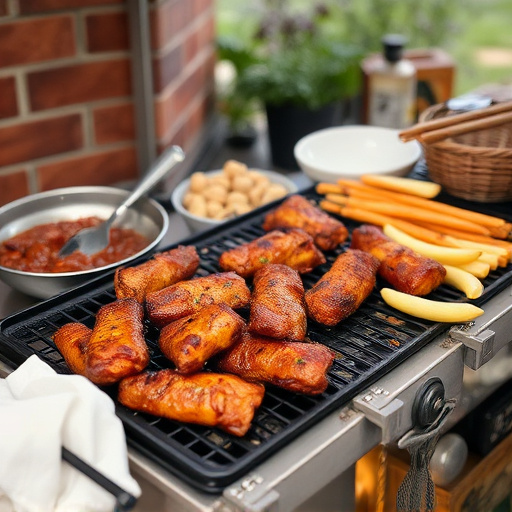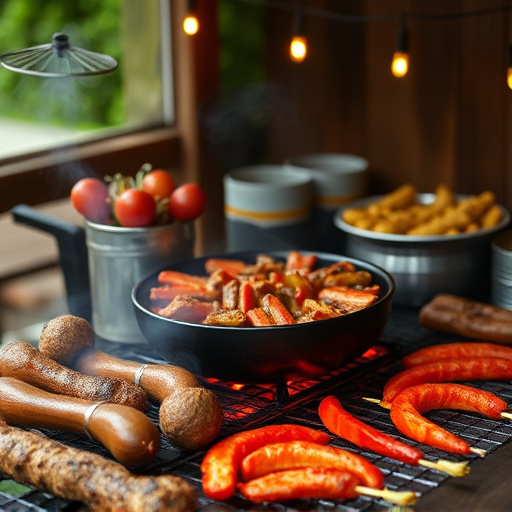Selecting the right cut (point or packer brisket) and mastering dry brining, seasoning, slow cooking at 225°F-250°F, and proper pulling/slicing techniques against the grain are key to crafting a mouthwatering BBQ Beef Brisket Recipe that's sure to impress.
Unleash the ultimate BBQ delight with a perfectly cooked beef brisket—a true masterpiece for any grill master. This guide takes you on a journey through the art of preparing this tender, flavorful cut. From selecting the ideal brisket to mastering dry brining and slow-cooking techniques, we’ll reveal secrets to achieve pull-apart tenderness. Learn how cooking times and slicing matter, ensuring every bite is packed with rich, smoky flavor. Discover the science behind it all and elevate your BBQ game with this comprehensive BBQ beef brisket recipe.
- Choosing the Right Cut of Beef Brisket for Your BBQ
- Dry Brining and Seasoning Techniques for Maximum Flavor
- Mastering the Art of Slow Cooking: Smoking and Cooking Times
- The Science Behind Pulling and Slicing: Tips for a Tender Brisket
Choosing the Right Cut of Beef Brisket for Your BBQ

When it comes to achieving mouthwatering, tender BBQ beef brisket, selecting the appropriate cut is a critical first step. Look for a high-quality, well-marbled brisket with a good balance of fat and meat. The point cut, known for its rich marbling and even tenderness, is a popular choice among seasoned pitmasters. This cut’s abundance of fat ensures a juicy, flavorful result when slow-cooked, creating a delectable BBQ beef brisket recipe that will impress your guests.
Remember, the brisket is a muscular cut, so choosing the right one can make all the difference in the final dish’s quality and texture. A good rule of thumb is to opt for a packer brisket or a combination of point and flat cuts to guarantee a hearty, satisfying BBQ beef brisket that melts in your mouth.
Dry Brining and Seasoning Techniques for Maximum Flavor

To achieve maximum flavor in your BBQ beef brisket recipe, dry brining and careful seasoning are key techniques to master. Start by dry brushing the brisket with a generous amount of coarse salt, ensuring every inch is coated evenly. This process helps draw out moisture from the meat, enhancing its natural juices and allowing for better absorption of flavors later on.
Next, create a blend of your favorite BBQ spices—including peppercorns, garlic powder, onion powder, paprika, and cayenne—to rub all over the brisket. The combination of these spices not only adds depth but also creates a delicious crust that seals in the meat’s juices during slow cooking. Experimenting with different spice blends can lead to unique and mouthwatering results, making each BBQ beef brisket an unforgettable culinary experience.
Mastering the Art of Slow Cooking: Smoking and Cooking Times

Mastering the art of slow cooking is key to achieving mouthwatering, flavorful BBQ Beef Brisket Recipe results. Smoking and cooking times play a crucial role in transforming tough brisket muscle into tender, juicy meat that melts in your mouth. The low and slow method allows for extensive collagen breakdown, resulting in a rich, succulent texture.
Ideal smoking temperatures range from 225°F to 250°F (107°C to 121°C), with a consistent heat source crucial for even cooking. Brisket is typically smoked for approximately 1 to 1.5 hours per pound, allowing it to reach an internal temperature of 165°F (74°C). This slow and steady process ensures the brisket stays moist and tender, making it the perfect candidate for a satisfying BBQ meal.
The Science Behind Pulling and Slicing: Tips for a Tender Brisket

The process of pulling and slicing beef brisket is an art that every serious BBQ enthusiast should master. This technique is crucial in transforming a tough cut of meat into a melt-in-your-mouth delicacy, perfect for any BBQ Beef Brisket Recipe. Understanding the science behind it ensures you achieve tender, flavorful results.
When cooking brisket, collagen in the meat breaks down over time, transforming into gelatin. This process begins around 145°F (63°C) and continues until the brisket reaches an internal temperature of about 203°F (95°C). Pulling the brisket at this stage, when the collagen has begun to convert but not fully broken down, results in a tender, juicy final product. Slicing against the grain ensures each bite is consistently soft and delicate.
